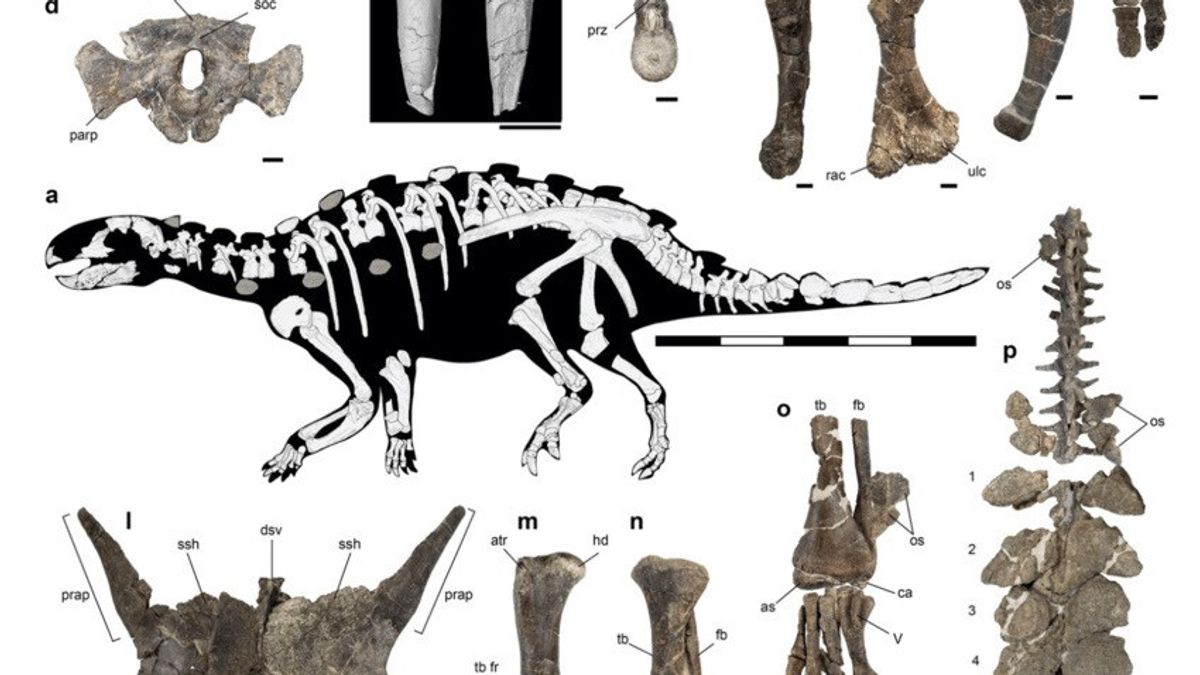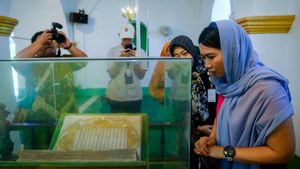JAKARTA - More than half a millennium ago, Aztec warriors brandished a weapon called a macuahuitl, a wooden stick with serrated obsidian blades embedded in its side, to inflict grisly wounds on enemies in close combat.
Separately, a newly identified armored dinosaur that inhabited the Patagonian region of Chile did the same thing to ward off predators about 74 million years ago with a tail that resembled a macuahuitl, scientists said Wednesday.
The four-legged plant-eating creature, named Stegouros elengassen, exemplifies the arms race that took place during the age of the dinosaurs for new traits of survival in a dangerous world. It also explains the evolution of a very successful group of tank-like dinosaurs called the ankylosaurs.
Stegouros lived in what is now the southernmost tip of South America during the Cretaceous Period in the twilight of the dinosaur era. This dinosaur was relatively small compared to other armored dinosaurs, measuring about 7 feet (2 meters) long.
Stegouros has a beak-like mouth for eating plants. The back and sides are lined with bony structures called osteoderms that serve as a protective layer.
Its tail is truly unique among dinosaurs. It was relatively short with fewer vertebrae than other armored dinosaurs. The hind half of the tail is covered by a leaf-like structure consisting of seven pairs of fused bony elements that are flattened with steep edges sticking outward.

"For now, we can only imagine how Stegouros could have used this weapon, swinging the tail side to side as a self-defense mechanism is a good guess," said vertebrate paleontologist Sergio Soto, a doctoral student and lead author from the University of Chile in study published in the scientific journal 'Nature', citing Reuters 2 December.
"The macuahuitl was an Aztec war stick used in close combat by Aztec warriors, possibly in a manner similar to a sword, causing great damage to the opponent. Stegouros' tail weapon roughly resembles the macuahuitl," study co-author and University of Chile Vertebrate Paleontologist Alexander Vargas added.
Stegouros was smaller than northern hemisphere ankylosaurs such as Ankylosaurus, which reached 26 feet (8 meters) in length. Ankylosaurs, some with a bony bony club at the end of their tails, were closely related to an earlier group of armored dinosaurs called the stegosaurus whose tail weaponry took the form of paired spike structures called thagomizers.
"Uncovering a new type of tail weaponry in armored dinosaurs was a big surprise to our team. When you imagine discovering a new type of armored dinosaur, you don't expect to find a morphology that is very different from the one already known," explains Soto.

Stegouros lived with four-legged long-necked dinosaurs, two-legged carnivorous dinosaurs, frog turtles, and small mammals on the banks of meandering rivers.
The nearly complete and well-preserved fossil was unearthed from a steep hill in inhospitable terrain near Chile's Torres del Paine national park. Stegouros translates to "roofed tail" while elengassen refers to the mythical armored monster of the local natives.
While northern hemisphere ankylosaurs are well understood on the basis of many fossils, the anatomy of those from the southern hemisphere remains mysterious due to separate remains or has not been thoroughly studied.
To note, stegouros retains certain traits from earlier stegosaurs, suggesting that southern hemisphere ankylosaurs diverged from their northern cousins early in the evolution of the ankylosaur lineage, Soto said.
Soto called Stegouros the "Rosetta Stone" of the southern hemisphere ankylosaurs because it has allowed scientists for the first time to decipher their anatomy.
The English, Chinese, Japanese, Arabic, and French versions are automatically generated by the AI. So there may still be inaccuracies in translating, please always see Indonesian as our main language. (system supported by DigitalSiber.id)













